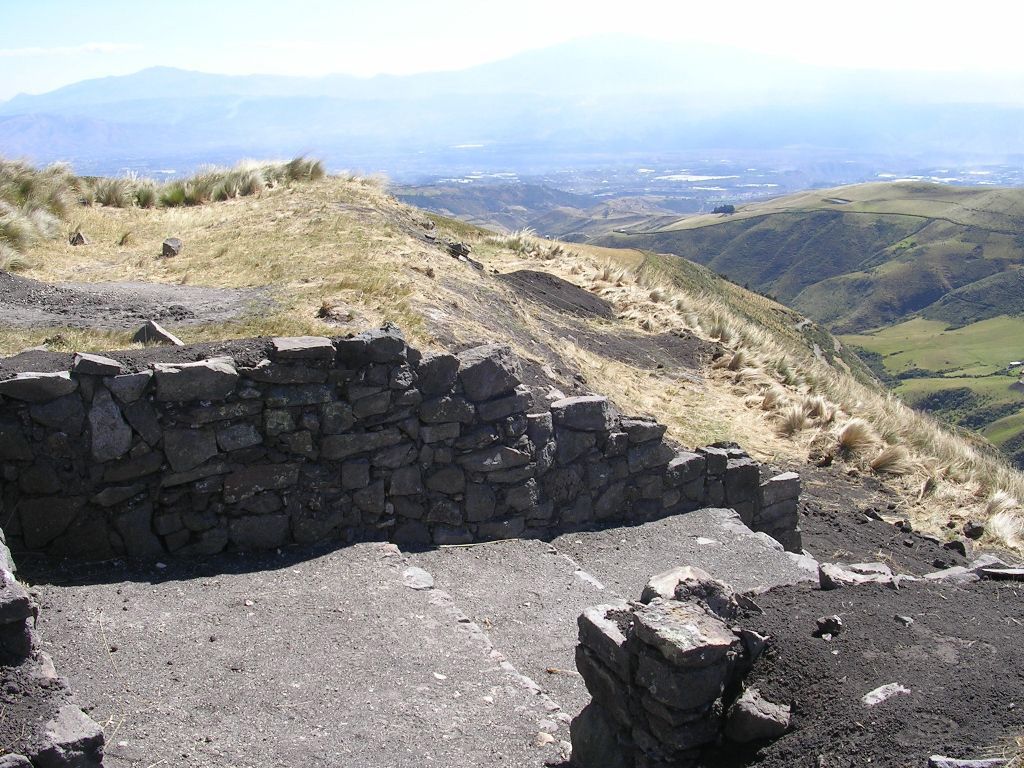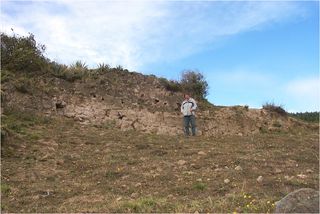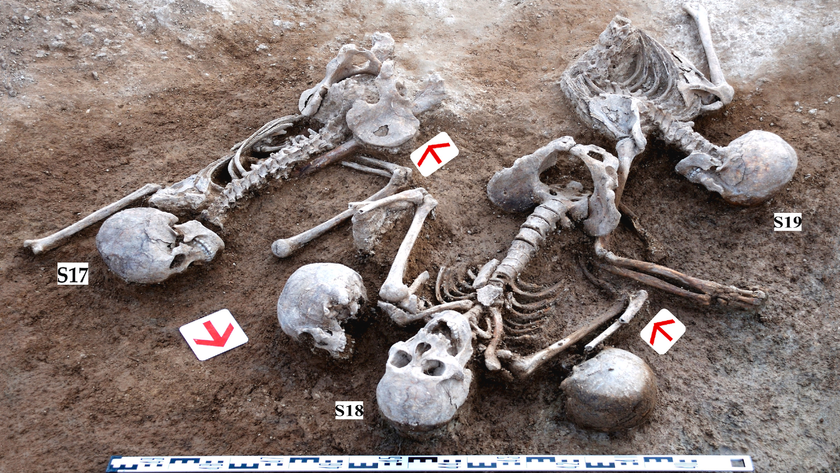Ancient War Revealed in Discovery of Incan Fortresses

Incan fortresses built some 500 years ago have been discovered along an extinct volcano in northern Ecuador, revealing evidence of a war fought by the Inca just before the Spanish conquistadors arrived in the Andes.
"We're seeing evidence for a pre-Columbian frontier, or borderline, that we think existed between Inca fortresses and Ecuadorian people's fortresses," project director Samuel Connell, of Foothill College in California, told LiveScience.
The team has identified what they think are 20 fortresses built by the Inca and two forts that were built by a people from Ecuador known as the Cayambe. The volcano is called Pambamarca. [Photos of the Inca fortress site]
The team's research was presented in March at the 76th annual meeting of the Society for American Archaeology (SAA), in Sacramento, Calif.
"We know that there are many, many fortresses throughout northern Ecuador that haven't been identified one way or the other," said Chad Gifford, of Columbia University, who is also a project director.
Spanish folklore?
The discoveries suggest that there is a ring of truth to stories that Spanish chroniclers told when they penetrated into South America during the 16th and 17th centuries.
Sign up for the Live Science daily newsletter now
Get the world’s most fascinating discoveries delivered straight to your inbox.
According to these stories, Incan ruler Huayna Capac sought to conquer the Cayambe. Using a "very powerful army," he was hoping for a quick victory but ended up getting entangled in a 17-year struggle.
"Finding that their forces were not sufficient to face the Inca on an open battlefield, the Cayambes withdrew and made strongholds in a very large fortress that they had," wrote Spanish missionary Bernabe Cobo in the 17th century in his book "History of the Inca Empire" (University of Texas Press, 1983). A translation, by Roland Hamilton, was published in 1983 by the University of Texas Press. "The Inca ordered his men to lay siege to it and bombard it continuously; but the men inside resisted so bravely that they forced the Inca to raise the siege because he had lost so many men."
Finally, after many battles, the Inca succeeded in driving the Cayambe out of their strongholds and onto the shores of a lake.
Cobo wrote that "the Inca ordered his men to cut the enemies' throats without pity as they caught them and to throw the bodies into the lake; as a result the water of the lake became so darkened with blood that it was given the name that it has today of Yahuarcocha, which means lake of blood."
Signs of War
The newly discovered Inca fortresses are built out of stone, contain platforms called ushnus, and are located on ridges about 10,000 feet (3,000 meters) above the ground.
The soldiers who lived in them were clearly prepared for battle.
"The site of Quitoloma has well over 100 structures for people living inside," said Connell. "Those structures are filled with Inca weaponry. We find quite a few sling stones stored in these houses as if they were lying in wait for the enemy to attack, or were about to storm down the hill."

The two Cayambe forts, by comparison, are made out of a tough volcanic material called cangahua. They are sizable fortresses with people likely having lived both inside and outside their walls. "There are fewer of them but plenty big," Gifford said.
One of the forts had evidence for a battle with two types of ammunition (sling stones and bola stones) found outside its walls. Both fortifications housed pottery designed using Ecuadorian rather than Incan styles.
More excavation needs to be done to unravel the full story of these fortresses, but so far the team has found no evidence of post-conflict slaughter at the Cayambe sites. "We see the apparent continued settlement in the area, which runs counter to this idea of [a] lake of blood," Connell said.
Cayambe pottery continued to be used in the region, suggesting that their culture carried on, at least on some level. "It could be that some peoples decided after many years of resistance and warfare to simply lay down their arms or become allies with the Inca," Connell said.
There certainly would have been a need for them to become friends.
In the decades after the war, large numbers of Spanish would penetrate into Ecuador and Peru. Smallpox ravaged the local population and the Inca would find themselves fighting an enemy equipped with gunpowder. Against these pressures they fell back, with their last stronghold at Vilcabamba falling in 1572.
The conquest was nothing short of a disaster for people living in Ecuador. When the Spanish took over they built estates called haciendas. The descendents of the Cayambe would be forced to labor for the Spanish, doing work like processing wool. Connell said that they worked in "very severe conditions," sometimes in windowless rooms. A difficult time for a people who, just decades earlier, had fought a war for their freedom.
Follow LiveScience for the latest in science news and discoveries on Twitter @livescience and on Facebook.

Owen Jarus is a regular contributor to Live Science who writes about archaeology and humans' past. He has also written for The Independent (UK), The Canadian Press (CP) and The Associated Press (AP), among others. Owen has a bachelor of arts degree from the University of Toronto and a journalism degree from Ryerson University.










